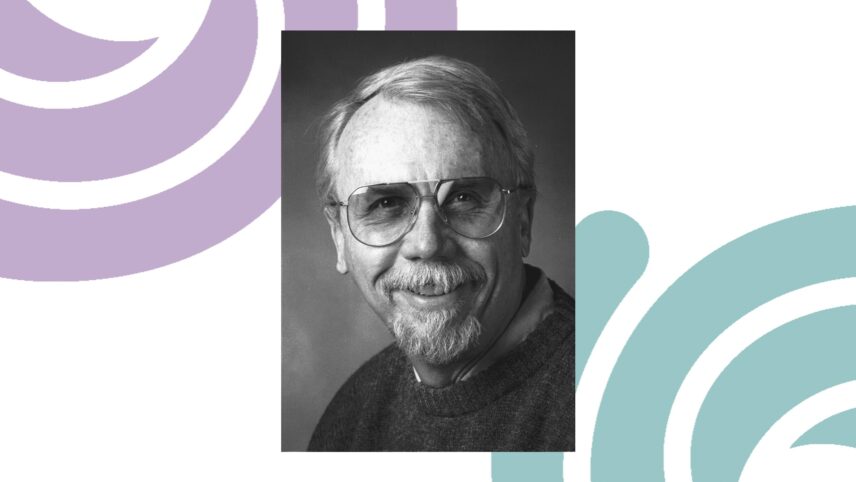Article begins
1935-2023

David C. Grove, Jubilee Professor of Anthropology Emeritus at the University of Illinois, Urbana-Champaign, and Courtesy Professor of Anthropology at the University of Florida, passed away on May 24, 2023, at the age of 87 after a long illness. His career trajectory focused on the archaeology of complex societies in central Mexico c. 1000–500 BC in the Formative (Preclassic) period. He was best known for his excavations at Chalcatzingo, a precocious Formative regional center with many stone carvings in highland central Mexico
Dave’s professional life spanned the major theoretical upheavals in the discipline of archaeology over the latter half of the twentieth century into the twenty-first. Not only did Dave witness the “theory wars” firsthand, but he managed to move from one school of thought to the other rather seamlessly, although not without controversy. His many retrospective examinations and reflections on the state of Mesoamerican archaeology marked him as a leading synthesizer, and he was often called upon to provide commentaries and updates on Formative central Mexico. Although he always eschewed any identification with “theoretical archaeology”—assuming it was opposed to empiricism—he made many contributions to theory and knowledge.
Dave grew up in Los Angeles and received a BA in geology from UCLA in 1958. Two years earlier, he and a friend had traveled through much of Mexico, which kindled his love for all things Mexican, especially its people, its food, and its folk art. He took correspondence courses from UCLA to enter graduate school in anthropology in 1962, earning his MA in 1965. In fall 1966 he took his young family to eastern Morelos state while he searched for sites with “Olmec”-style artifacts for his dissertation.
Dave’s 1968 dissertation summarized brief excavations and surveys of several Morelos Formative sites, but the archaeological data led him to question the conventional culture-historical presumption of Olmec “influence” in the highlands. That year he published an article in American Antiquity on the Olmec-style reliefs at one of those sites, Chalcatzingo, and he was invited to contribute to a Dumbarton Oaks conference on the Olmec. This work helped him land his first tenure-track position in 1968 at the State University of New York at Binghamton, which he held until 1970 when he was lured away by the University of Illinois at Urbana-Champaign as an associate professor.
In 1972, with funding from the National Science Foundation and the National Geographic Society, Dave embarked on the “Chalcatzingo Archaeological Project” (1972–1976), returning to the site that had first intrigued him in 1966. His approach this time was fully within the processual school, emphasizing regional settlement patterns, adaptation to local ecology, theories of the evolution of complex society, analysis of social rank through burial practices, obsidian sourcing, and many quantitative studies.
That project resulted in two books: a popular one in 1984, Chalcatzingo: Excavations on the Olmec Frontier, and the final site report in 1987, Ancient Chalcatzingo. There were also many articles on Chalcatzingo and the place of Olmecs in Mesoamerican history. Arguing against core-periphery theories that elevated the Olmecs as originators of civilization, Dave stressed the agency and independent accomplishments of peoples on the “periphery,” recognizing a higher level of early multi-regional interaction in the Formative period with multiple streams of “influence.”
In his own words, he was trying to integrate “dirt archaeology and art,” and he networked with art historians and iconographers. In the 1980s such efforts were deemed heretical given the epistemological chasm between processual and what was starting to be called postprocessual archaeology. Against criticism from detractors, Dave maintained his firm belief that a comprehensive anthropological approach required attention to all facets of ancient lifeways, including symbolism and ideology.
Dave also pursued related field projects in his quest to investigate the rise of complex society. The “Río Verde Archaeological Project” (1986–1987), on the Pacific coast of Oaxaca state, was intended to find early pottery, but it eluded him. His next effort was in the Gulf Coast Olmec heartland itself, the 1991 “Olmec Settlement and Subsistence at La Isla, Veracruz” project to substantiate reports of Early Formative pottery at La Isla. Once again, stratigraphic circumstances foiled his aims. The pottery was apparently deposited by river action at Classic period La Isla from an undiscovered early site upstream. Those real-life setbacks contributed to his final book project, Discovering the Olmecs: An Unconventional History (2015), a collection of stories from various Olmec archaeologists that reveals how knowledge of the Olmecs accumulated out of instances of serendipity and calamity in the field.
In the 1990s, Dave turned his attention to topics more typical of twenty-first century archaeology: phenomenology, sacred landscapes, meaning-making, and experiential approaches. He carefully examined the spatial arrangements of reliefs and monuments at regional centers, rather than treating them as isolated artworks, and demonstrated that many of them are aligned to be viewed by ritual processions.
In 2001 Dave retired from UIUC as Jubilee Professor and followed his wife to her new position at the University of Florida. He continued to produce more articles and book chapters, and was a fixture at professional meetings until 2015, when Parkinson’s disease began to slow him down. Throughout his active research career, he was a dedicated and well-beloved teacher. He was most proud of the accomplishments of the many graduate students whom he advised at the university or in his field projects.
Dave also took on leadership roles in the American Anthropological Association, including president-elect and president of the Archaeology Division (1989–1993) and member of the AAA Executive Board (1991–1993). He was a fellow of the American Academy of Arts and Sciences (2004) and recipient of the AAA’s Alfred Vincent Kidder Award for Eminence in Archaeology (2008).
Plans are underway to curate his field data as the David C. Grove Faculty Papers collection at the University of Florida Archive.
(Susan D. Gillespie, University of Florida)

